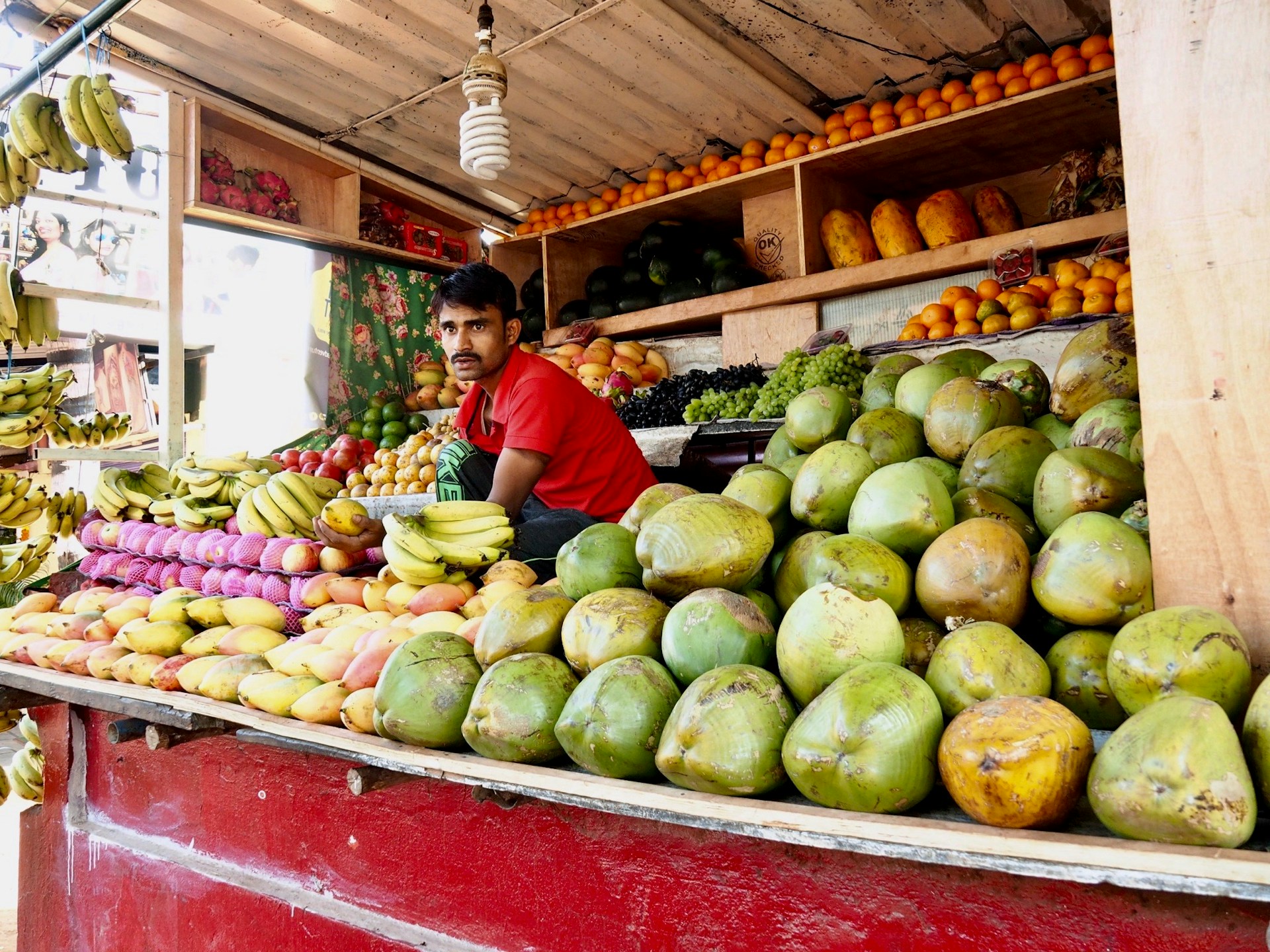Inventory management can determine the success of any retail business, especially one dealing with fresh produce.
A key factor in this process is ensuring compliance with regulatory standards.
Falling short in this area can trigger a domino effect of negative consequences that could jeopardize your entire operation.
From controlling spoilage to enhancing consumer safety, compliance checks serve several purposes.
This discussion aims to outline the importance of these checks for produce retailers.
It also offers a practical guide to conducting them effectively.
Contents
Key Compliance Checks For Produce Retail Inventory
1. Verification of Purchase and Sales Records
The first critical step in maintaining a compliant and efficient produce retail inventory is the verification of purchase and sales records.
Record keeping is not only required by law but also serves as a reliable reference point for comparison and decision-making processes.
Every retail business, including produce, needs a precise record-keeping system to ensure the accurate tracking and monitoring of its inventory.
Produce purchase records offer a reliable trail of every product entering the inventory, including details about the supplier, the amount purchased, the purchase price, and the delivery date.
On the other hand, sales record offer crucial insights into the number of items sold, the selling price, the date of sale, and other specific customer-related data.
With these records, retailers can easily track their stock levels, plan purchases, and even forecast future sales.
Verification of these records ensures an audit trail which is crucial for inventory management, reconciling supplier invoices, calculating profits, and providing a tax audit paper trail.
It’s also a good business practice to verify purchase and sales records regularly and not just during the annual inventory count.
Regular verification allows for correcting inventory mistakes in a timely and efficient manner, maintaining an up-to-date inventory record, and minimizing the risk of stockouts or overstocking.
Verification processes can include reconciliation of physical counts with recorded inventory totals, cross-checking receipts against supplier invoices or validation of sales data with cash register totals.
The use of inventory management software can automate and streamline the verification process, making record-keeping a considerably less daunting task.
Advanced software solutions also offer features such as real-time inventory tracking, smart order routing, and predictive analytics, significantly enhancing the efficiency of inventory management.
Nonetheless, it’s important to train employees on proper record-keeping procedures and the correct use of any inventory management tools to ensure data accuracy.
Inaccurate records can result in incorrect inventory figures, which can lead to stockouts, unplanned costs, decreased sales, and lost customer trust.
Audit logs of changes to purchase and sales records are a best practice that allows a recount or review if there are discrepancies or potential fraud.
Although verifying purchase and sales records might seem like a mundane task, it plays a critical role in ensuring every product in a retail inventory is accounted for, enhancing the overall financial health of the business.
2. Checking for Product Quality and Freshness
In produce retail, it is critical to maintain high standards for product quality and freshness.
The quality and freshness of inventory items are not only crucial to meeting customer expectations but also to ensuring the health and safety of consumers.
The condition of items on the shelves or in storage can be a clear indicator of the care taken in their sourcing, storage, and sale.
Without consistent, thorough checks, the product quality and freshness can easily slide, leading to potential health risks and damage the reputation of the business.
One of the first steps in this process corresponds to regular checks and assessments of the produce.
These assessments often involve checking items for any visual signs of deterioration, such as bruising and discoloration.
Also, it entails assessing the freshness by assessing the texture and smell of the items.
This goes hand in hand with having a good understanding of the typical lifespan and freshness signals of different types of produce.
Another critical aspect of maintaining product quality and freshness involves managing the produce inventory effectively.
Inventory should be rotated to ensure that older items are sold first.
In addition, any items that fall below the necessary standards should be immediately removed from the shelves or storage.
It can be helpful to establish a routine for these checks to ensure they are done regularly and thoroughly.
Not only does this aid in keeping the inventory fresh, but also helps in providing a consistently high-quality experience for the customer.
Moreover, it is important to remember the role of supplier assessments in maintaining produce quality and freshness.
Choosing reputable suppliers and having a good relationship with them can support effective quality control.
The right supplier will deliver high-quality produce and consistently meet delivery schedules, thus ensuring the availability of fresh items at all times.
By diligently checking for product quality and freshness at all stages – from sourcing to selling – retailers can ensure that their inventory is always of the best possible standard.
3. Validation of Product Labeling and Packaging
An integral part of maintaining compliance in produce retail inventory management involves the validation of product labeling and packaging.
The accurate representation of the product on its label establishes consumer trust and aids in the overall customer shopping experience.
Produce retailers must ensure that the product labels correctly display critical information such as product name, ingredients, net weight, expiration date, and the country of origin.
Packaging should be such that it preserves the freshness and quality of the product while also abiding by the regulatory standards.
Furthermore, product labeling is not merely for compliance with retail regulations, but also plays a critical role in marketing and effecting successful sales.
Keeping in line with the laws, labels must make no false claims or misleading statements about the product.
Logo placement, fonts, colors, phrases, and pictures used must also meet the standards prescribed by the relevant governing bodies.
Special attention must be given to products that claim to be organic or bear any other such certifications—it’s crucial these claims are verified, and the certifications are legitimately obtained.
Currently, consumers are increasingly interested in the sourcing and practices used in the production of their food, thereby making transparency in labeling extra important for retailers.
Product packaging should be designed to protect the product from contamination and damage while being mindful of any environmental impacts.
Packaging that is easily reusable or recyclable can further boost a retailer’s brand image.
Furthermore, retailers must ensure all staff members can reliably interpret the product labels—training can be considered a valuable investment.
All these factors contribute to the validation of product labeling and packaging thereby ensuring compliance with all required regulations.
Efficient inventory management software can aid retailers in tracking product information and ensuring accurate labeling.
Validation of product labeling and packaging help retailers in gaining customer trust and ensuring no legal transgressions occur in the selling of their products.
4. Ensure adherence to food safety regulations
Ensuring adherence to food safety regulations is a critical compliance check for any produce retailer.
Keeping the inventory safe for consumers is not just ethically right, it is a mandatory requirement enforced by health and safety authorities.
Failure to adhere to these regulations can result in heavy penalties, business disruption, and severe damages to reputation.
Retailers must ensure they meet the highest standard of food safety.
This not only involves raw produce but also the cleanliness and condition of the storage facilities.
Produce must be appropriately stored, cooled, and displayed to prevent any potential contamination or spoilage.
Emphasis should also be placed on employee education and proper training in food safety best practices.
Having a knowledgeable staff is key in maintaining food safety and it also helps in creating a culture of compliance within the organization.
Another important aspect of food safety is the documentation and record-keeping of all relevant information.
These records include but are not limited to: produce suppliers, delivery dates, storage temperatures, and any food safety inspections or incidents.
Having these records readily available can be invaluable when undergoing a regulatory food safety audit.
With an increasingly vigilant customer base, retailers must also consider public perception and expectations when it comes to food safety.
Modern consumers demand transparency and have the ability to research the food safety track record of a retailer.
Therefore, adhering to food safety regulations not only keeps a retailer compliant with the law, but it also establishes them as a trusted and reliable choice for customers.
Lastly, diligence in compliance with food safety regulations will protect the health and safety of customers, employees, and the wider community.
Indeed, ensuring adherence to food safety regulations is an investment in the future sustainability and success of a produce retail business.
5. Conduct Regular Physical Inventory Audits
The process of conducting regular physical inventory audits is undoubtedly one of the key compliance measures retailers should implement to ensure their produce inventory is well managed and accounted for.
Inventory audits can help prevent discrepancies between the actual and misreported quantities of produce, which often result in either profit losses or overstocking issues.
Typically, physical audits involve accounting for each item in the inventory, either by counting or weighing, and comparing the results with the numbers reported in the inventory management system.
Inventory audits are best conducted during off-peak hours or when the store is closed to minimize sale disruptions and ensure accurate counts.
One of the key aspects of inventory audits is the adherence to the First-In-First-Out (FIFO) principle, especially in produce retail, where products are highly perishable.
FIFO ensures that products that are received first are sold first, maintaining product freshness and quality while reducing waste caused by spoilage.
Retailers should develop a standard operating procedure (SOP) for conducting physical inventory audits to ensure consistency and accuracy in the process.
This SOP could include details such as when the audits are to be conducted, who is responsible, how the produce should be counted or weighed, and how discrepancies should be addressed.
Training staff properly on how to conduct inventory audits is equally important, as human errors can lead to significant discrepancies in inventory records.
Further, implementing a cycle counting practice, where a small subset of inventory is counted on a specified day each week, can alleviate the burden of full-scale inventory audits.
Equally important is to ensure all inventory audit data is accurately recorded and integrated into the inventory management system to provide a comprehensive view of the status of inventory at any given time.
Precision is key, and thus the utilization of barcode scanners, inventory management software, and even automated systems can help prevent errors and enhance the efficiency of inventory audits.
Carrying out periodic audits not only helps maintain inventory accuracy, but it also aids in highlighting potential issues in the inventory management process such as constant mismatches, overstocks, or even thefts; these issues can then be addressed proactively to prevent future occurrences.
In the realm of produce retail, conducting regular physical inventory audits plays a significant role in not only ensuring accurate inventory records, but it also directly influences customer satisfaction, product freshness, and ultimately, the bottom line of the retail business.
Therefore, putting in place a robust and foolproof system for conducting regular physical inventory audits is instrumental for the success of any produce retailer, making it an essential part of key compliance checks in this business.
The Bottom Line
Given the significance and potential implications of maintaining proper standards in food-related businesses, it is absolutely critical that all aspects of operations are kept in check.
This includes meticulous verification of purchase and sales records, constant monitoring of product quality and freshness, rigorous validation of product labeling and packaging, strict adherence to food safety regulations, and the conducting of regular physical inventory audits.
Any lapses in these processes could result in reduced customer satisfaction, potential legal issues, financial losses, or even harm to consumer health.
Therefore, every food business must prioritize these aspects to maintain high standards, protect its reputation, and promote customer trust.




